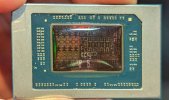Subtlesnake
Regular
Well if they managed to fit 33% more CUs in the same power envelope, the power savings had to come from somewhere. We should compare the 12 CU Strix Point with Phoenix at the same TDP.I am not saying it´s bad, it was reaction to Bondrew claim, that on Computex we will see how AMD fixed frequency of RDNA3 with RDNA3.5 and it´s just 100Mhz over Ryzen 9 7940HS
https://www.amd.com/en/products/processors/laptop/ryzen/7000-series/amd-ryzen-9-7940hs.html





